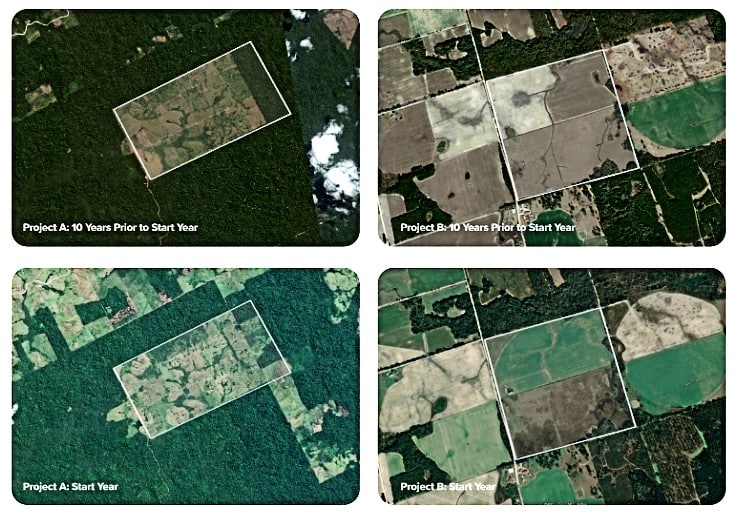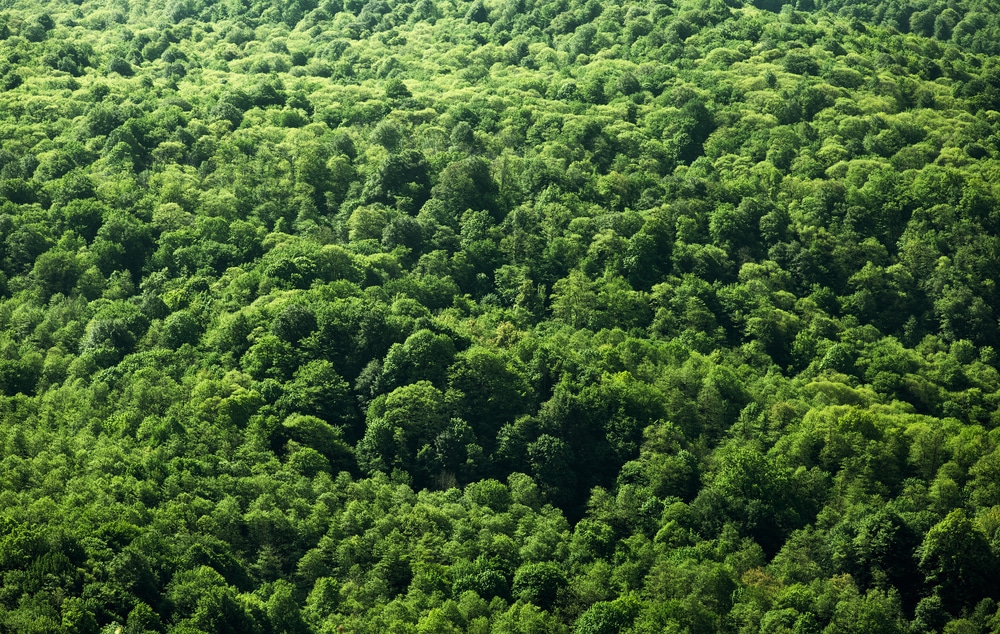Many organizations are now turning to carbon removal projects to help achieve their net zero targets but these projects vary a lot, making it hard to know their real impact. A carbon credit company, Pachama, believes that reforestation projects are some of the most proven, high-value carbon removal solutions as long as they meet certain markers.
Pachama’s AI-Powered Removal
Pachama is focusing on saving and expanding forests across the world. The platform uses remote sensing and artificial intelligence (AI) to capture carbon and verify carbon credits. Its AI provides more accurate data that are credible and transparent.
Moreover, Pachama’s technology gives more assurance to buyers of carbon removal credits in reaching their net zero goals. For four years, Pachama has been working with over 150 forest projects around the globe.
And among its large carbon credit buyers include Salesforce, Microsoft, Airbnb, Netflix, and Shopify.
The company’s latest $55 million Series B funding round brings its total funds to $79 million to date. The funds help speed up Pachama’s platform in bringing integrity and transparency to carbon credit markets.
A Battle Over Which Carbon Removal Works
While it’s very clear that the world needs carbon dioxide removal (CDR) solutions to reach net zero by 2050, not all solutions that remove the harmful gas are viable and beneficial.
The nascent technological carbon removal industry has been growing rapidly as large companies support them to scale up. Governments are also funding CO2 removal startups. In fact, billions of dollars is sum have been invested in the industry by the US, the UK, and other governments.
But that trend may seem to end so soon.
Recently, the UN slams technological or engineered removals while favoring natural ways of capturing carbon. The panel said that carbon removals using machines are “unproven” and “risky”.
The high-profile group is tasked to set up the global carbon market. If their decision becomes final, then engineered methods of removing CO2 may be doomed.
Globally, CDR captures 2 billion tonnes of CO2 a year. And over 99.9% of that is done through conventional ways like restoring and expanding carbon-hungry forests.
Estimates suggest that natural solutions can account for 30% of climate change mitigation efforts by 2030. Plus, forests are home to 80% of all terrestrial biodiversity, while 25% of the world’s population relies on forests for a living.
But nature-based carbon removal doesn’t come clean as well. It has some big issues to deal with – lack of high-quality supply.
For instance, several reforestation projects in the U.S. were questioned for their quality. Also, some projects in Brazil’s Amazon were claimed to be not delivering the real carbon reductions they promise. Thus, the corresponding carbon credits they generate are also questionable.
What Makes Pachama Reforestation High-Quality?
This is where Pachama’s technology comes in to address the quality issue. The company believes that a few key characteristics make nature-based solutions better than engineered ones.
For one, nature is a lot more scalable because it’s faster and easier to plant trees than build giant machines. Also, nature-based removals are more cost-effective.
High-quality forest projects often cost less than their engineered counterparts. For example, carbon removal credits from direct air capture range from $250-$600 while Pachama suggests $50-$82 for high-quality reforestation projects.
Not to mention their beyond-carbon benefits such as promoting biodiversity and helping local communities. So reforestation is a crucial climate solution, but it’s not as simple as planting trees. It needs to have these four key features to be a quality project.
#1. Trees
Reforestation projects must be composed of native species as non-native plants may not be suitable for the local terrain. In this case, a forest project may be subject to destruction. That’s why Pachama accepts only a project if more than 60% of the trees are native species and none of them are invasive.
It’s also crucial that the project offers a diverse selection of species, over 5 species, as natural forests have. Gabe Chapin, Project Implementation Lead at Pachama noted that:
“From a carbon perspective, species diversity dramatically increases the resilience of a forest over time. Monocultures can be easily wiped out by insects and diseases, whereas diverse forests can absorb the loss of a single species and regenerate to fill the gaps left.”
#2. Place
Trees must be planted in the right terrain. That means the reforestation project must be additional. If it’s naturally occurring in the area and its surroundings, it may not be additional.
Pachama assesses additionality through baseline and regional suitability checks. The company will pass on a project if reforestation similar in nature to the planned project activities is observed within a buffer region – 20 km area around the project.
#3. Reason
People often exploit financial incentives and the carbon credit market is no exception. For instance, project developers that have collected carbon credits from restoring forests may cut down trees for lumber at the end of the crediting period.
But Pachama has a way of assure that the projects they support are not like that through forest cover checks. They look at the tree cover 10 years before the project start date and ensure that there wasn’t any intentional logging or clearing happening prior to the project.
The images below show which project qualifies for Pachama – Project B.

#4. People
Finally, one big factor that can determine whether a nature-based carbon removal project lives or dies is the community involved. A fully engaged local community is critical in protecting and monitoring a reforestation project.
Pachama checks levels of community involvement by various means. These include checking if there are indigenous people impacted by the project, and performing Free, Prior, and Informed Consent (FPIC). Then the team conducts a literature review (local news, project documents, interviews, etc.) to gauge the project’s engagement with the local communities.

